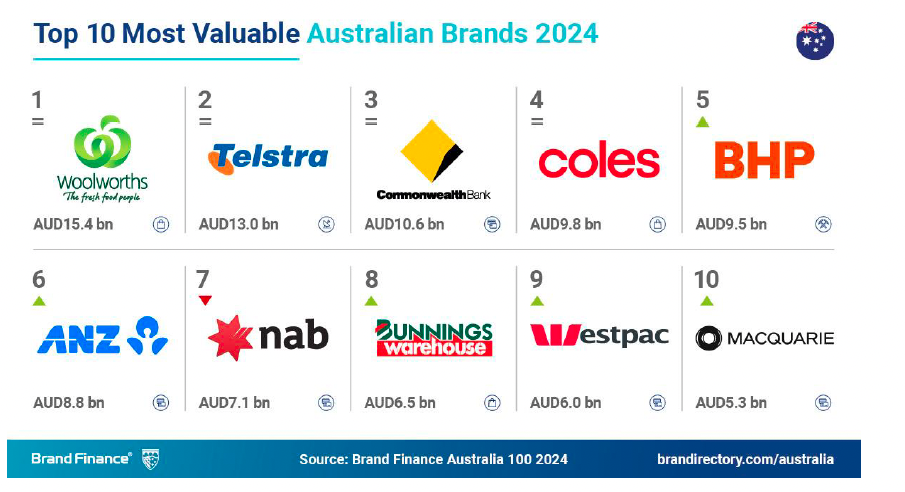Top recruiters: Market flips as strong talent pool, conservative choices crunch marketing jobs; employers ‘in driver’s seat and trimming the sails’

What you need to know:
- Recruitment leaders from Hourigan and Perceptor agree: It’s a tough market for marketers looking for their next role right now.
- Soft economic conditions have seen a swathe of large and quiet corporate downsizing programs, removing thousands of roles across Australian organisations across all functions and roles, including marketing. ABS figures indicate retrenchment is higher this year – 1.7 per cent, the highest figure since 1972.
- But there’s also an unusually high calibre and volume of talent in the senior marketing pipeline, according to recruiters, which is adding to the competitive conditions for marketers looking for their next roles in upper management and c-suite level.
- The good news is depending on category, demand for modern marketing leaders who can demonstrate strong commercial acumen, creative leadership, strategic thinking and are conversant in the four Ps of marketing is present.
- The bad news is conservative hiring remains in place, which, coupled with plenty of choice, gives employers an ability to focus on exact hires rather than apply lateral thinking to their next choice of candidate.
- Salaries for marketing leaders and senior marketers are also holding, in line with other executive positions.
Quietly quitted
It’s an uncompromising jobs market for CMOs and senior marketing hopefuls in Australia right now – and it’s put employers very much back in the driver’s seat.
You can partly blame it on the economy sitting on a knife edge, a situation which has led to thousands of jobs cuts across everyone from Telstra and Crown Resorts to financial services, technology and public sector agencies over the last 12 months. Sweeping job losses, while not specific to only marketing functions, have nonetheless taken their toll on availability of good marketing management and leadership jobs right now.
The loss of two CMO-level roles over the last two weeks at Seven West Media and Southern Cross Austereo amid painful media industry contraction certainly darkens this picture.
Broader corporate downsizing shines through the latest Australian Bureau of Statistics data. April 2024 figures pegged unemployment at 4.1 per cent – the highest it has been since the pandemic and a steady climb upwards over the last 18 months off the back of quiet redundancies and trims across employee bases. Redundancy stats recorded by the ABS to the end of February 2024 also show a 0.3 per cent uptick in annual retrenchment year-on-year to 1.7 per cent, the highest annual rate on record in February since 1972. The percentage of people retrenched out of total job exits was 11 per cent, up from 8 per cent last year (although a far cry from the 21 per cent recorded by end of 2020).
Department of Employment and Workplace Relations (DEWR) administrative data for 2024 also shows from 1 January 2024 to 9 July 2024, 327 businesses notified Services Australia of prospective plans to make 16,558 positions redundant. In 2023, 455 businesses reported 28,643 expected redundancies to Services Australia – only a proportion of retrenchments publicly reported by the ABS.
But it’s not just the dour economic environment or quiet downsizing marketing job seekers have to contend with when it comes to finding their next marketing management or CMO gig. There’s a higher ratio of senior marketers “kicking around” the jobs market, according to Hourigan International partner, Stuart Tucker.
“There’s actually quite a lot of people on the market looking for roles at the moment,” the former Hipages customer chief, Commbank and Aussie marketer tells Mi3.
Tucker points out the local talent pool has been buoyed by more senior marketers relocating back to Australia after spreading their wings overseas. In addition, a number of CMOs who took a sabbatical following the tough times they corralled their brands and businesses through at the height of the Covid pandemic, are re-entering the market. Some marketers were simply burnt out by the experiences of getting through the pandemic, while others had been ready for a change but played it safe to get through uncertainty before pulling up stumps. Several Mi3 has spoken to have also felt they’ve tackled transformation, got to a natural progression in their journey with one organisation, and are now back exploring their options.
Then there are the CMOs Tucker has previously suggested to Mi3 are burnt out by remits that have expanded “tenfold” in the last decade – while some have chosen to not pursue full-time work, there are others who took a break in order to recharge before taking on the next big gig. All this is giving employers the upper hand in the supply and demand see-saw.
“I describe it as a buyers’ market, whereas 18 months ago it was probably a seller’s market,” Tucker says. “The tide is turning back to the employers, rather than the employees, particularly at those mid to senior levels. It’s for a number of different reasons – redundancies, plus people who have been making career or wellbeing decisions.
“Talent has been coming back to Australia too. I’ve met several strong, talented people who have come back from Asian and American roles. I’ve heard from Australian expats with young families who wanted to get out of the US, whether it’s because of the political situation or the fact their six-year-olds are being trained on what to do in the instance of a gun siege at their schools. Australia remains a very attractive market for employment for all of those socio-economic reasons.
“But it’s still a tough market to navigate your way around.”
They’re expected to be driving short and long term, really understanding commercials and how marketing contributes to the growth of the business, staying on top of market trends, customer and regulatory changes. It’s demanding. Any marketer who is shirking away from that needs to reconsider as it’s the expectation these days. You can’t just be a one-dimensional marketer anymore.
Slowed market, corporate recalibration
This time last year, Perceptor predicted the CMO market was going to slow. And it has slowed considerably, says managing director, Mark O’Connor.
“There are a number of reasons. The primary one is corporate confidence is low. They’re simply just cutting spending across all areas. It’s not just marketing, it’s across the whole recruitment market,” he says. “And it’s broader than usual, in that it’s across the whole B2B services market. Whether you’re in executive recruitment, consulting, or anything else, corporates have cut back on their spending.
“From the recruitment market perspective, this has come naturally at the end of a five-year cycle, which was pretty good. The two years leading up to Covid were good in terms of the recruitment market. The Covid cycle was very volatile, but overall it was strong and remained so the year after Covid.
“So there was always going to be a downturn this year. But because interest rates went up so quickly, corporate confidence has pulled back. It’s had this amplifying effect on the CMO recruitment market.”
That doesn’t mean there aren’t opportunities however, which both Tucker and O’Connor, are quick to emphasise.
“Yes, there has been gradual downsizing here and there but it’s also very category-dependent. There are categories doing really well that are investing, recruiting and beefing up their capabilities,” Tucker says. “Others are gently tweaking the dials and making cuts here and there. Businesses are taking the opportunity to trim their sails a bit.”
Mi3’s latest FY25 Outlook Benchmarks report backs this up. Our report indicates marketers are operating in a three-speed economy, with one-third holding more budget than last year; one third holding the same budget; and one-third losing budget. By contrast, the 2022 edition of the State of the CMO survey from CMO magazine found the ratio of Australian marketers losing budget in 2022 compared to 2021 was only 11 per cent – more than six in 10 in fact gained budget.
Yet O’Connor was surprised to find CEOs and MDs surveyed as part of the firm’s latest annual report, Market Trends and Salary Review, were relatively upbeat.
“They were upbeat on the back of having done some pretty good cost control over the previous 12 months. They were saying we’ve made some hard decisions, and we think the medium term looks good. But that isn’t translating into going out and hire a brand new CMO because we think it’s all about to be growth, growth, growth,” he says.
“But to your point, I think it’s frustrating for people in candidate mode. Corporates aren’t panicking – it’s not like the GFC where everything has shut down and there was literally no hiring. It’s a cyclical downturn and the volume of hiring has come right off.”
Not surprisingly, categories where there has been more hiring over the last few months are the industries doing well.
“Travel, travel insurance are strong, financial services is starting to pick up, FMCG/consumer goods are reasonably resilient; it never goes through booms, and it never goes through troughs,” says O’Connor. “The sectors hurt over the last 12-18 months have been technology, professional services, plus financial services nine or 12 months ago. The banks went hard and they went early [with cuts]. But now, there’s a bit more optimism there.”
The impact on salaries
The other good news is salary expectations have held. To be fair, both Tucker and O’Connor note any spikes in salary to occur during the height of the pandemic already largely levelled out before this latest slowdown.
“CMOs have kept pace with other functional leads. Therefore salaries have increased basically with inflation,” says O’Connor. “Within the marketing world, where the big salary increase happened during Covid was more in lower mid-level roles focused on operationalisation of the martech and the digital. If you think about it, everyone built out digital and ecommerce in that early Covid timeframe. That’s where the big bubble of demand happened, so that level of candidate experienced big percentage increases.
“If you went into Covid as a $120,000, 26-year-old, you might have come out of Covid as a $160,000, 28-year-old. Because your level in the marketing team really experienced this inflation as every single industry was trying to hire those types of skills. Data analytics was the same, ecommerce was the same.”
In its latest annual report released in June, Perceptor revealed senior executive salaries for chief customer officers are sitting at $450,000 + benefits in ASX300 or large global corporate firms, while mid-size and high-growth companies are paying $325,000 + benefits on average. Slightly down the salary order, chief marketing officers are sitting at a $400,000 + benefits in the listed or large corporate entities, and $300,000 + benefits in the mid-size and high-growth companies.
This dips to $222,000 – $320,000 + benefits for heads of marketing; then between $200,000 – $250,000 for heads of customer experience or heads of brand. A senior marketing manager can expect anywhere from $150,000 to $200,000 in base salary depending on organisation size.
“Employers will pay good money for really strong candidates, particularly in those areas of specific skills, such as customer marketing, deep digital skills, experience in emerging categories like sustainability or new energy,” Tucker adds. “It’s a supply and demand equation.”
Corporates aren't panicking – it’s not like the GFC where everything has shut down and there was literally no hiring. It's a cyclical downturn and the volume of hiring has come right off.
Evolution of the CMO role
Then there’s the evolution of the CMO role coming into play. O’Connor sees chief customer officer roles becoming more common, for one, but he agrees the role of modern marketing leader itself is more nuanced and complex than ever.
“Therefore, the expectations of what goes in that brief is bigger and more complex than it was five years ago,” he says. “There is a quite a big variance by industry sector. But what they expect of their ‘marketing leader’ is much closer to the commercial reality of their actions. These roles are about driving revenue, hopefully driving profitability, and driving efficiency out of their marketing spend.”
Tucker says universal expectations are high of CMOs, general managers of marketing and respective titles.
“They’re expected to be driving short and long term, really understanding commercials and how marketing contributes to the growth of the business, staying on top of market trends, customer and regulatory changes,” he says. “It’s demanding. Any marketer who is shirking away from that needs to reconsider as it’s the expectation these days. You can’t just be a one-dimensional marketer anymore.
“Employers or CEOs are looking for marketers who are highly commercial, understand how their marketing strategy contributes to the corporate strategy. They’re strong leaders, strong creative leaders, and are on top of everything going on in their environment and are able to lead their teams to innovate and grow.”
Over at Perceptor, the client is usually talking about transformation – either they’ve done one, or they need to do one.
“The common phrase we’re hearing is ‘people, process and technology’. That applies to marketing as well,” O’Connor continues. “Are they saying I need someone who’s going to revolutionise my business through AI? No, of course not. But the expectation is the candidates are smart enough to be able to understand the impact of AI on their function over the next couple of years.
“The challenge for marketers now – not just CMOs, but the whole marketing team – is they’ve invested a lot in martech over the last five years. And now the business is saying to them, let’s optimise and get the efficiencies out of it. They need to do that before they can talk about the next wave of technology.”
Of course risk averse, conservative economic responses to economic conditions make for conservative CMO choices. And a plethora of half-decent options often sees organisations gravitating towards more exacting candidate choices. That means marketers looking to category switch may find it more of a challenge in 2024 than previously.
“The Australian recruitment market is generally very conservative. But the degree of that conservativeness changes through the cycle,” says O’Connor. “Because we’re now in a down cycle, and there’s lower confidence and people are risk averse, it’s very difficult for us to get clients to look outside of their perfect brief. We will often include a slightly left field, or what I like to call the ‘exotic’ candidate in the shortlist. Clients get all excited, take them through the interview – and they always end up hiring the industry expert.
“When it’s boom times and everyone’s talking about growth, people are very optimistic and bullish, and that’s much less of a factor – you can get clients to think more broadly. But in this environment, it’s actually quite difficult. Which is very frustrating. It’s a real shame. It’s not all the time, but if you were to ask me generally, that’s the reality.”
O’Connor’s advice to those looking at their next option is to make sure they’re both across the commercials and the full potential purview of marketing.
“If I was giving advice to an early to mid-30s, high flying marketer, my advice would make sure you truly understand all four Ps and you get experience of running all four Ps. It’s not just about digital lead gen, or promotion. It makes me feel really old to say that,” he says.
A hint of optimism
While quiet cuts may well continue in coming months across corporate Australia, there are green shoots for CMOs and marketers.
“Most businesses across most sectors we spoke to had achieved, or on were on track to achieve, their commercial objectives for the year. Therefore, bonuses were going to be getting paid at the high level for most people presuming they performed,” O’Connor says. “It wasn’t as doom and gloom as I was expecting based on the corporate demand for hiring.
“That gives me a sense of optimism about the next 12 months. But it’s not suddenly going to switch on. It’s going to be a gradual increasing confidence that translates into hiring.”
O’Connor also advises people to be mindful of the fact it takes time to land the next senior management role.
“By definition, you’re on the top of the pyramid. Most companies have only got one version of the job you want. The sheer number of opportunities in the market at CMO level versus when you were looking as a mid-level person is much smaller,” he says.
“The other thing to remember is despite the current cycle, it’s a very exciting time to be in marketing because of the technology changes and what’s happening with our ability to connect with consumers. So as a marketing professional, I don’t necessarily take the jaded, negative view of marketing. I think it’s really exciting.”





